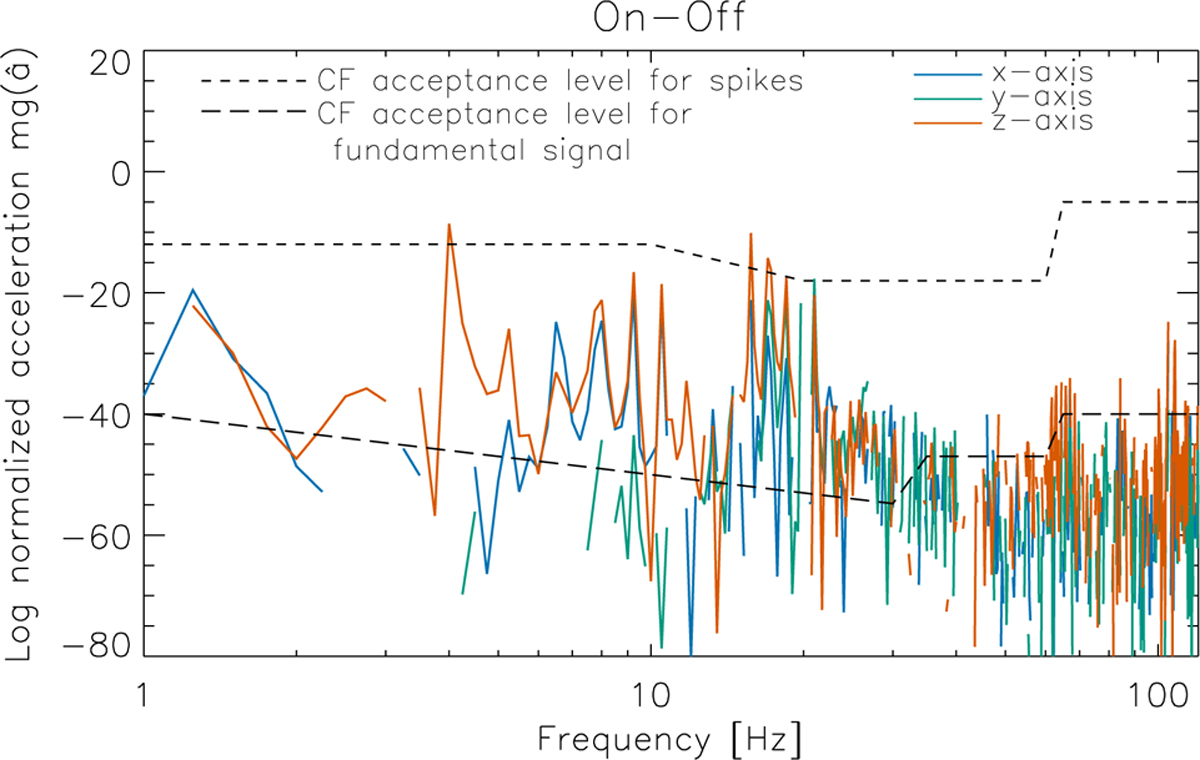Fig. 14

Download original image
Vibrations measured on the attachment flange of ERIS while suspended, shown as a power spectrum of the normalised acceleration (i.e. force, the product of acceleration measured on the flange and adopted mass) after subtracting a baseline measurement. The two lines show the requirement for the continuous fundamental signal and that acceptable for spikes in the distribution. ERIS is very close to the specification when suspended in a vertical orientation and if one assumes that the full mass (including support) of 2523 kg is vibrating as a solid body. The vibration decreases when the instrument is inclined by 25° in any direction, or if less than the full mass is actually contributing to the force derived on the flange.
Current usage metrics show cumulative count of Article Views (full-text article views including HTML views, PDF and ePub downloads, according to the available data) and Abstracts Views on Vision4Press platform.
Data correspond to usage on the plateform after 2015. The current usage metrics is available 48-96 hours after online publication and is updated daily on week days.
Initial download of the metrics may take a while.


